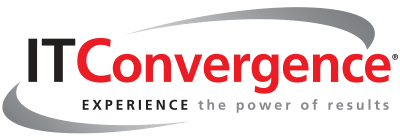The volatile environment of global trade has resulted in tariffs shifting from a background cost to a boardroom concern.
What used to be handled by customs and trade compliance teams now carries substantial weight in supply chain strategies, procurement decisions, financial forecasting, and digital transformation efforts. A 2023 EY survey found that nearly 70% of multinational organizations cite trade regulations and tariffs as one of their top five business risks.
And the pressure is only increasing. With shifting trade agreements, retaliatory duties, digital customs enforcement, and region-specific tax reforms (like Brazil’s upcoming indirect tax overhaul), the rules are changing faster than most legacy systems, or siloed teams, can keep up.
The challenge? In many enterprises, Global trade tariff management is still treated as a narrowly defined compliance task. Classification, landed cost calculation, and certificate management often sit with a single trade team, disconnected from the rest of the organization.
The result? Missed savings. Slower sourcing decisions. Budget variances. Shipment delays. And above all: a lack of strategic alignment in the face of regulatory disruption.
If tariffs are now a material threat to profitability, agility, and resilience, then managing them can’t remain a back-office function. It must become enterprise-wide.
This article explores why global organizations need to elevate tariff management from a tactical obligation to a strategic, cross-functional discipline, and how to build the right framework, data foundation, and cloud-enabled systems to make it happen.
What Happens When Tariff Management Lives in a Silo
For many global enterprises, tariff management is still tucked away in the compliance department, often operating in isolation from procurement, finance, and supply chain teams. On the surface, this structure might seem logical: after all, tariff classification, origin validation, and customs documentation are technical, regulated functions.
But in practice, this siloed approach can create operational blind spots that ripple across the entire organization, especially in volatile markets.
Here’s what that typically looks like:
Delayed Reactions to Regulatory Change
When trade compliance teams are the only ones monitoring tariff shifts, policy changes rarely reach decision-makers in time. That means:
- Procurement may continue sourcing from high-tariff regions, unaware of alternative cost-saving origins
- Finance teams may budget based on outdated landed cost models
- Supply chains may fail to route around newly restricted or high-duty lanes
Take the example of the U.S.–China trade tensions, where Section 301 tariffs shifted duty rates on thousands of goods. According to the Peterson Institute for International Economics, U.S. tariffs affected over $370 billion worth of imports, yet many organizations failed to adapt in time, eroding margins for months.
Missed Duty Savings and Overpayments
When classification decisions aren’t linked to procurement or PLM (product lifecycle management) systems, opportunities to:
- Leverage trade agreements
- File for advanced rulings
- Utilize duty drawback programs
are often missed. A World Bank study noted that companies leveraging trade facilitation programs correctly can reduce landed costs by 5–15%, depending on their sourcing strategy. That’s real money left on the table when compliance is disconnected from the broader enterprise.
Inaccurate Financial Forecasts
Tariffs are rarely fixed, they vary by origin, HTS code, trade program eligibility, and even political negotiations. If those variables aren’t embedded into budgeting, pricing, and sourcing models, finance leaders are flying blind.
The result? Quarterly surprises. Margin erosion. And reactive cost-cutting that could have been avoided with better alignment.
Increased Risk of Audit Penalties
When only a few individuals understand classification rationale, certificate status, or country-of-origin logic, audits become chaotic. Inconsistent documentation or unclear product histories can trigger:
- Penalties and retroactive duties
- Seizures or shipment holds
- Reputational damage with customs authorities
A proactive, enterprise-wide approach ensures that data is centralized, decisions are transparent, and audit readiness is always within reach.
Siloed tariff management may have worked in a slower, more stable trade environment. But today, it’s a liability.
Why Tariff Management Must Be Enterprise-Wide
As trade complexity grows, so does the need for shared ownership of tariff strategy across the enterprise. Tariffs affect customs brokers and trade analysts, and they also influence supplier selection, product pricing, cash flow forecasting, system architecture, and regulatory posture.
To move from reactive firefighting to proactive decision-making, organizations need to break down silos and bring procurement, finance, IT, legal, and supply chain into the conversation.
Here’s what enterprise-wide tariff management looks like in action:
Procurement: Sourcing with Origin Intelligence
Traditionally, buyers focus on unit cost and supplier reliability. Now with shifting tariffs in play, the country of origin can radically change landed cost. By aligning with compliance teams, procurement can:
- Evaluate suppliers not just by price, but by duty impact
- Build supplier declarations and certifications into onboarding
- Choose trade lanes that qualify for preferential agreements (e.g., USMCA, EU FTAs)
- Respond faster to regulatory shifts with pre-cleared alternatives
Finance: Modeling Risk and Margin in Real Time
Tariffs can make or break profitability, yet many FP&A teams rely on static or outdated cost assumptions. When tariff data is integrated into financial models:
- Finance leaders can simulate duty impact under various sourcing scenarios
- Budgets become more accurate, resilient to trade shifts
- Leadership gains transparency into cost-to-serve by region
According to a report, organizations that embed trade variables into forecasting processes see up to 12% improvement in budgeting accuracy under high-volatility conditions.
IT: Enabling Data-Driven Decision-Making
Enterprise-wide tariff strategy is only possible when systems talk to each other.
IT plays a critical role in:
- Integrating Oracle Fusion GTM with ERP, PLM, and WMS systems
- Ensuring data quality for classification, valuation, and certificate tracking
- Enabling automation (e.g., landed cost engines, AES filings, supplier portals)
- Supporting global dashboards and audit-ready documentation
Supply Chain: Routing Smarter, Not Just Faster
Tariffs affect which ports to use, how goods are consolidated, and which trade lanes offer the best return.
When logistics teams are aligned with compliance, they can:
- Avoid high-risk or high-duty lanes proactively
- Preemptively prepare required documentation to avoid shipment delays
- Choose fulfillment paths that minimize exposure while optimizing delivery time
Legal & Compliance: Driving Governance, Not Just Enforcement
With broader stakeholder engagement, compliance teams shift from being enforcers to strategic advisors. They help define:
- Internal classification protocols
- Risk thresholds and escalation workflows
- Trade governance models that scale across regions and product lines
When everyone owns a piece of tariff strategy, compliance becomes embedded into operations, not bolted on.
The result of this enterprise-wide approach? Fewer surprises. Smarter sourcing. Stronger margins. And greater resilience in an uncertain global landscape.
Building the Enterprise Framework: Data, Systems, and People
Making tariff management enterprise-wide requires that you loop in more departments into compliance emails. And it also requires you to operationalize strategy through integrated systems, trusted data, and shared ownership.
So, how do you build a future-ready framework that scales across business units, product lines, and regions?
Centralize Trade Data and Classification Logic
You can’t make good decisions with fragmented data. The foundation of any enterprise-wide tariff strategy is a single source of truth for:
- Harmonized Tariff Schedule (HTS) codes
- Country-of-origin declarations
- Certificates of origin and value-add documentation
- Landed cost components (duties, freight, insurance, surcharges)
By consolidating these into a platform like Oracle Fusion Global Trade Management (GTM), you eliminate rework, reduce disputes, and create a clear audit trail across departments.
Gartner has noted that organizations that centralize compliance logic across procurement and supply chain platforms see fewer classification errors and dramatically faster response times to regulatory changes.
Integrate GTM Across Your Enterprise Stack
Even the best trade platform won’t add value in isolation. To drive action, Oracle GTM must be connected to your:
- ERP system (e.g., Oracle Cloud ERP, Oracle EBS) for procurement and financial alignment
- PLM for product-level attributes tied to origin qualification
- WMS/TMS for fulfillment and customs automation
- Supplier portals for real-time certificate collection and updates
Enable Enterprise Visibility Through Shared Dashboards
Visibility is the glue that holds this framework together. Modern tariff strategy demands role-based dashboards that deliver:
- Real-time landed cost simulations for finance
- Supplier compliance health scores for procurement
- Customs risk alerts for legal and trade teams
- Duty impact models for executive planning
Empower People with Process Ownership
Systems are essential but people make them matter. To support an enterprise-wide approach, define clear roles across:
- Compliance: Sets classification standards and regulatory alerts
- Procurement: Drives certificate collection and supplier declarations
- Finance: Integrates tariff exposure into cost modeling
- IT: Maintains system integrity and data flows
- Legal: Oversees audit readiness and documentation policy
- Executives: Sponsor trade as a resilience driver, not a cost line
The Role of Technology in Scaling the Strategy
Building an enterprise-wide tariff strategy is only possible if the technology supporting it is agile, integrated, and future-ready. The complexity of today’s trade environment demands more than static spreadsheets or siloed compliance modules. It calls for a cloud-native system that automates, connects, and adapts—across every function that touches global trade.
That’s where platforms like Oracle Fusion GTM shine. Oracle GTM reduces manual effort in the most risk-prone areas of trade compliance:
- Automated HTS classification using product and origin data
- Rules of origin validation for preferential trade programs
- Real-time landed cost calculation with duties, taxes, freight, and surcharges
- Electronic filing of customs documents (e.g., AES)
- Supplier certificate tracking to verify declarations and value-add
The modern platform also gives finance and procurement teams the tools to model cost impact in real time:
- How would a tariff change affect margin?
- What if we source from a different region?
- What are the trade-offs between price, duty exposure, and delivery time?
Nowadays, global customs agencies are digitizing enforcement at record speed. From CBP’s ACE platform to the EU’s Import Control System 2 (ICS2), digital traceability is becoming a requirement—not a luxury.
Oracle GTM helps ensure that:
- Every classification and certificate is timestamped and sourced
- Every product and trade lane has a clear regulatory history
- Every audit request can be fulfilled in minutes, not weeks
Traditional, on-prem trade systems can’t keep up with quarterly trade updates, integration needs, or remote collaboration. Oracle GTM Cloud changes the game with:
- Quarterly updates for new regulations and capabilities
- API-first architecture for integration with ERP, TMS, PLM, and more
- Secure, scalable infrastructure with global reach
- Built-in analytics and dashboards for every stakeholder
Cloud-native means your trade strategy evolves as fast as global trade does.
IT Convergence’s Approach to Enterprise-Ready Tariff Strategy
As a recognized Oracle partner with deep expertise in Oracle Fusion GTM, supply chain integration, and legacy system modernization, ITC helps global enterprises transform tariff management from a siloed compliance task into a strategic cross-functional capability.
Here’s how we do it:
- Seamless Migration from Legacy Systems: Still running Oracle EBS ITM or relying on spreadsheets and manual workflows? We help you:
- Migrate classification logic, product data, and customs configurations to Oracle Fusion GTM
- Rebuild decision rules with cloud-native automation
- Minimize downtime and preserve operational continuity during transition
- Supplier Enablement and Certification Campaigns: Your tariff strategy is only as strong as your supplier data. We help organizations launch global certificate collection campaigns to:
- Gather and validate origin declarations
- Centralize supplier documentation
- Track compliance status in real time
- Reduce risk of denied preferences or duty reclassifications
- All of this enables clean, auditable trade lanes and maximizes eligibility for duty-saving programs like USMCA, CBAM, and EU FTAs
- End-to-End Oracle GTM Implementation and Integration: From system blueprinting to go-live and beyond, our Oracle GTM services include:
- Cross-functional discovery and business process alignment
- Integration with Oracle ERP, PLM, TMS, and supplier portals
- Configuration of classification engines, landed cost calculators, and customs filing logic
- Role-based dashboards for procurement, finance, and compliance
- Ongoing Optimization Through Managed Services: Trade compliance is constantly evolving, as should your strategy. Through our GTM managed services, we provide:
- Monthly rule updates and configuration tuning
- Duty impact analysis and what-if modeling support
- Audit prep and documentation management
- Continuous system performance and integration monitoring
From Compliance Cost to Competitive Advantage
Tariffs being a static line item is a thing of the past. Now, they are a living, evolving variable that impacts sourcing, pricing, profitability, and regulatory exposure, sometimes all at once.
Still, many organizations continue to manage tariffs in isolation, disconnected from the business units responsible for cost, planning, and execution. How can that be sustainable?
Companies must treat tariff management as an enterprise-wide responsibility, focusing on staying agile, compliant, and cost-effective. How? Ideally, there must be strategies put in place to align people, processes, and systems, all the way from procurement and finance to IT and logistics.
With Oracle Fusion GTM at the core and IT Convergence as your partner, you gain a roadmap for resilience, speed, and strategic clarity.
Let’s help you operationalize tariff strategy across your enterprise.
- Schedule a Strategy Session
- Download “The CFO’s Guide to Strategic Trade Planning in a Tariff-Heavy World” eBook
- Explore ITC’s Trade Compliance Services
Disclaimer:
The information presented in this blog is for educational and informational purposes only. IT Convergence is a technology and ERP systems advisory firm. While we closely monitor the tax, trade, and tariff volatility landscape, we focus on helping organizations prepare their Oracle environments accordingly. We do not provide tax or legal advice, nor do we interpret tax legislation.
We recommend that all organizations consult with qualified tax or legal advisors to assess their specific obligations based on industry, entity classification, and jurisdiction.
IT Convergence supports customers in configuring, optimizing, and future-proofing their systems for compliance but does not assume responsibility for legal or fiscal determinations.



